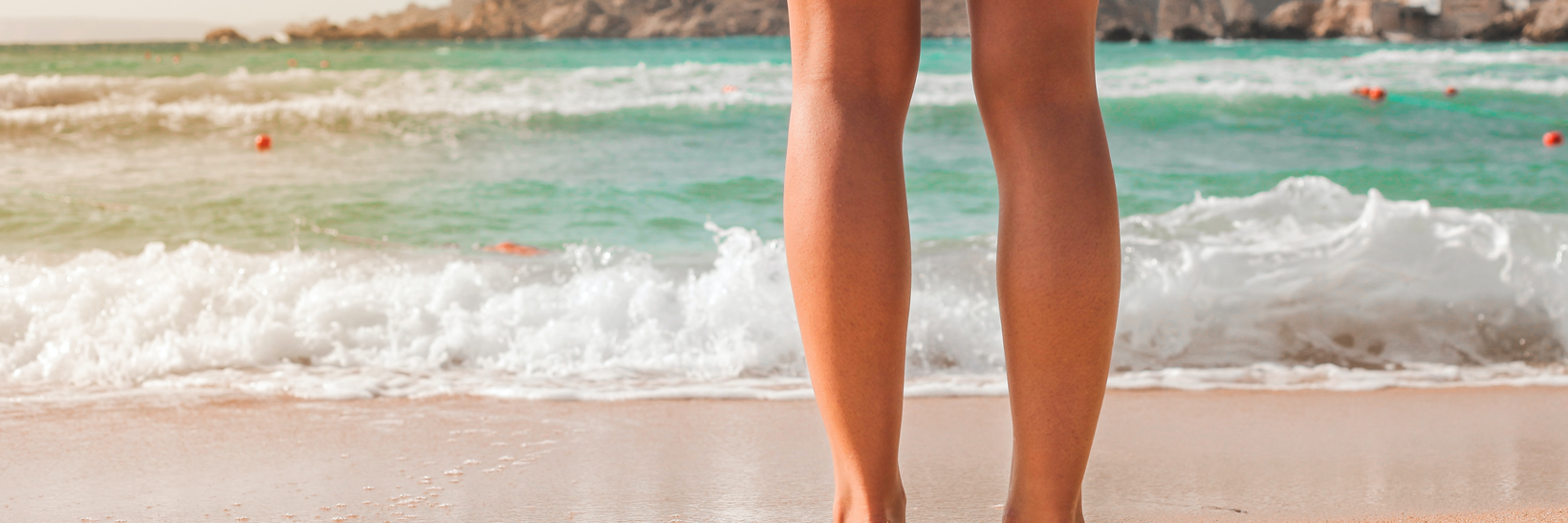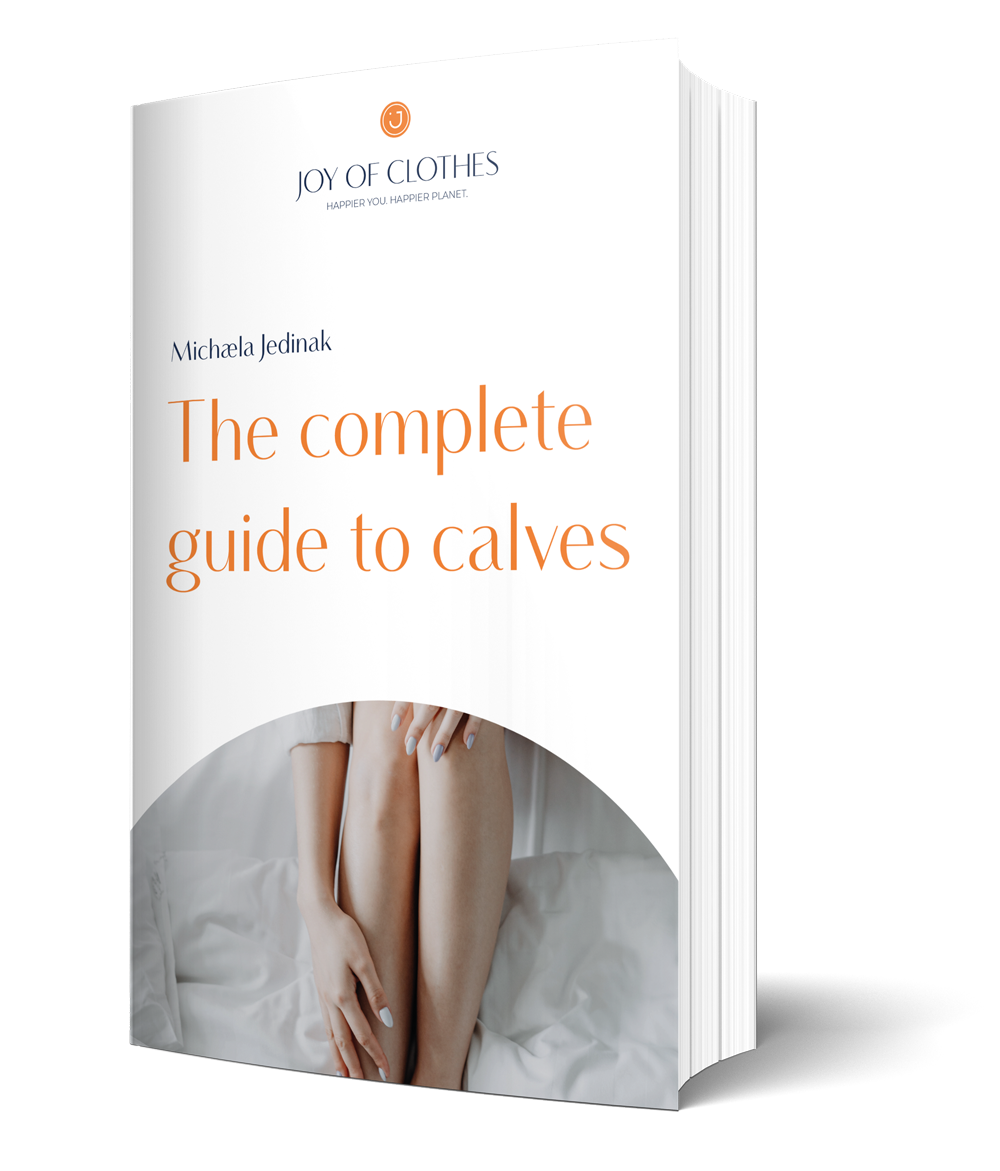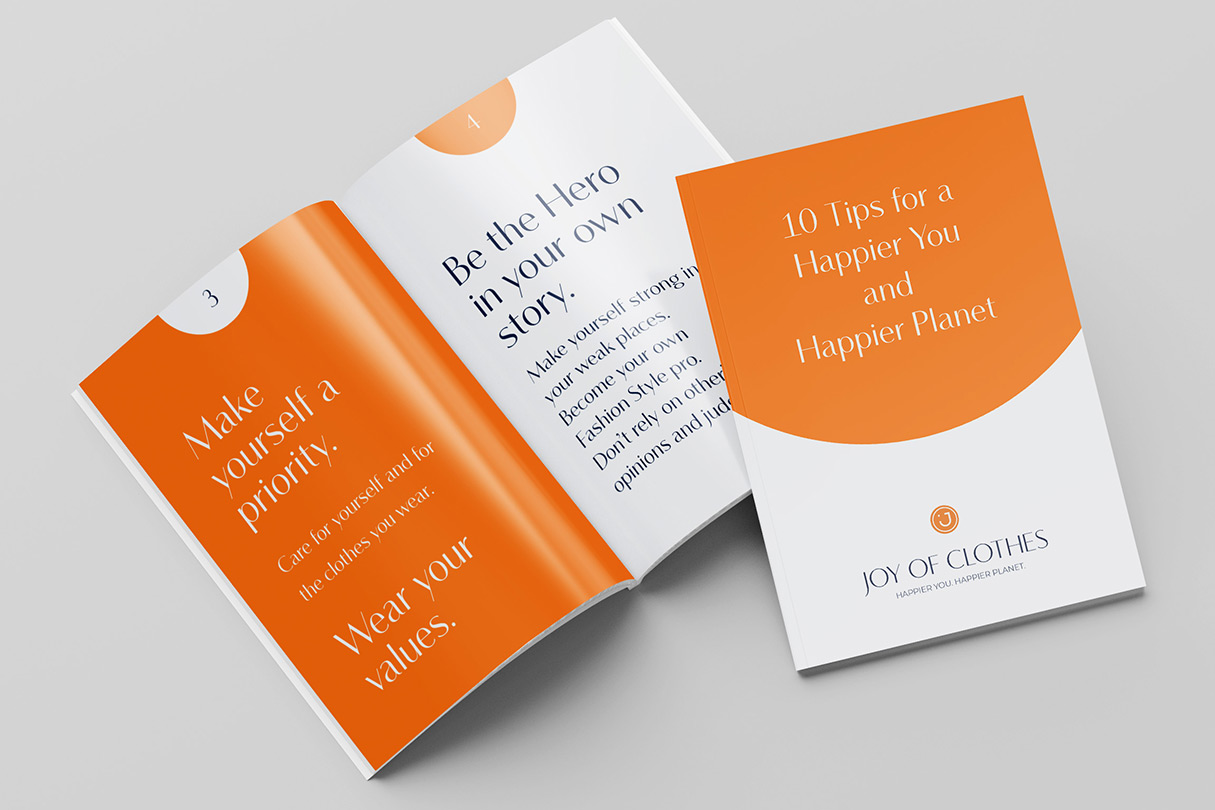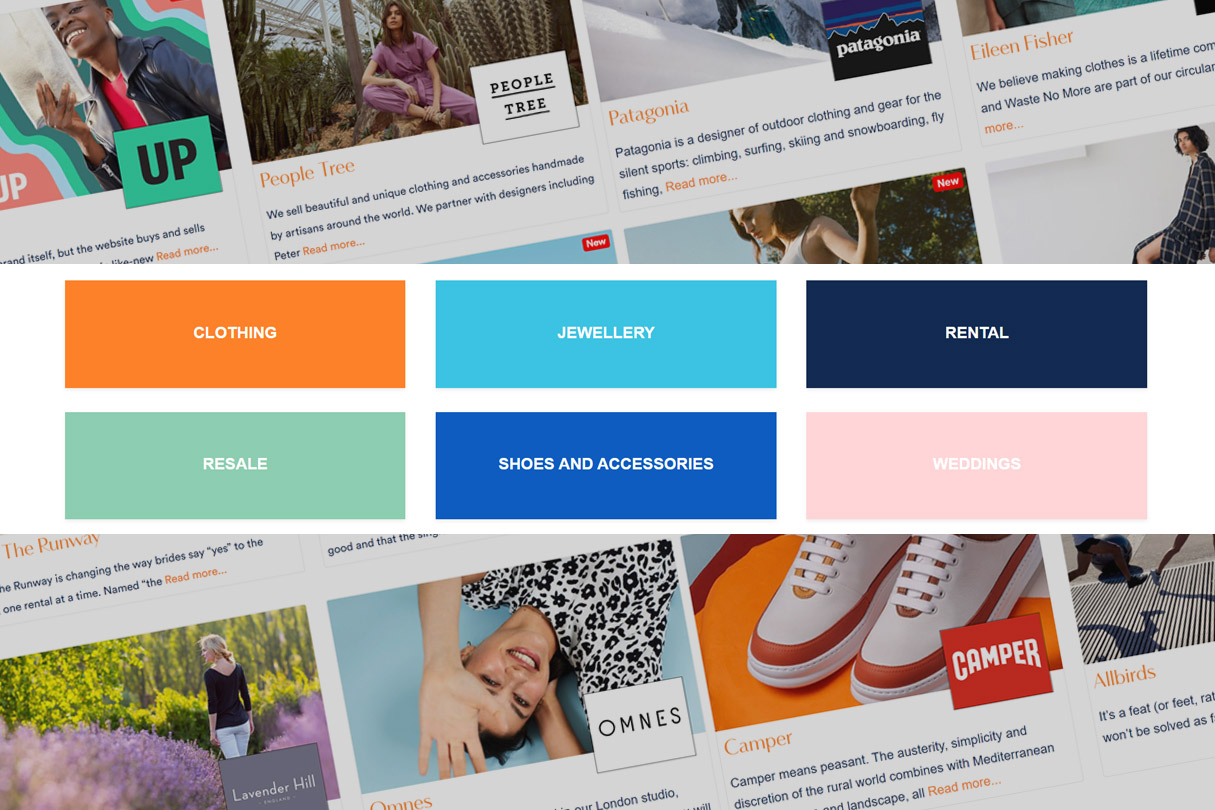Style Advice – Clothes guides
Style guide to calves

Dressing your calves requires a strategy, because you need to have an understanding of your build, you need to put the size of your calves in context with your bust, body shape, height and proportion. By modifying the lines of your clothing you can create visual balance whether you have small or large calves.
In this eBook you will find an extensive guide to dressing your calves, including:-
Style advice
Visual Balance
How to create visual balance between your height and calf size
How to dress big calves and create visual balance at the same time (Advice on how to choose trousers, skirt styles, shoes, heels and boots)
How to create visual balance between your body shape and calf size
How to create visual balance with your proportions and your calf size

How to dress according to your calf size
Calf sizes
Small calves
The more style details the better
Big calves
Lean and clutter free
Medium calves
Moderation is key; choose one rather than two style details
Leg line: Small/medium/long legs
Long legs
Need to breakup their length visually
Short legs
No clutter – choose simple styles that elongate your leg line
Medium legs
The same goes as for medium calves; moderation is key – choose one rather than too many style features at once.
GUIDELINES FOR YOUR BODY SHAPE DEPENDING ON YOUR CALF SIZE
Neat Hourglass
Apple
Inverted Triangle
Rectangle
Full Hourglass
Pear
Lean Column
Example section
How to dress big calves and create visual balance at the same time
Here some generic style tips for big calves
- Choose a monochromatic look (in darker colours) in your clothing – especially when dressing your lower body. This will not only elongate your leg line, but will also distract from your calves by creating visual balance
- Wear your skirt/dress hemline on the thinnest part of your leg line e.g. below knee or ankle length
- Wear medium to chunky heels to balance with your calves
- Opt for straight or boot-cut style trousers instead of a narrowing leg line
- Avoid any bulk and detail in this area e.g. finishing hemline, short boots, buckles on your boots, ankle straps, kitten heels
- Don’t wear mini skirts, short trousers or capri trousers
- Stay away from patterns and light colours in your trousers or hosiery
How to choose the right pair of trouser
Opt for full length trousers to hide bigger calves. Your trousers should flare below the knee, so opt for straight leg, and boot-cut or flares might also work well. Avoid wearing tight trousers that taper towards the ankle as the material will cling to the calves and enhance their size. Unless you are in the garden, on the beach or at home, avoid shorts, capri or any trousers that are cropped below the knee since this will call attention to the calves and shorten leg length. On these occasions choose those trousers without any style details – keep them as simple as possible.
How to choose the right skirt style
It’s true skirts are not your best friends, but there are ways to make them work for you. The key is to avoid a clingy skirt line that tapers and stops either before or at mid-calf. Instead, choose a hemline that either finishes on the thinnest part of your leg line e.g. below knee or ankle length that covers your ankle.
How to choose the right shoes and heels
When you select a shoe, choose a style that balances a bigger calf. The make and style of the shoe is as important as the heel that comes with it. That means don’t opt for petite shapes such as ballet shoes, because this just highlights the chunkiness of your calf size. Avoid any styles of kitten or stiletto heels and shoes with ankle straps. All of these styles will draw the eye to your bigger calves. Open toed shoes with a solid heel tend to be more flattering, as well as boots that stop just below the knee when worn under your trousers – never expose them by wearing with a shorter hemline. As well as this, avoid wearing boots that stop mid-calf or below unless you plan on only wearing them with long trousers. Knee length boots are your best option, but choose them in a simple style, dark colour and ideally they should have elastic side panels for the best comfort and fit.
Selecting boots for bigger calves
Boots with bigger calves have become more widely available. Previously, boots were only sold in very basic styles and colours. Now manufacturers are providing a larger selection of colours, styles, shapes, and heels for various occasions. In the same way that everyone’s build is different, legs, calves and feet vary as much in shape, size, length and form. Everyone has different “sizing” issues and in order to create visual balance one needs to know how to address each individually.
When buying a pair of boots for your larger calves, please consider the following:
Boots with bigger calves have become more widely available. Previously, boots were only sold in very basic styles and colours. Now manufacturers are providing a larger selection of colours, styles, shapes, and heels for various occasions. In the same way that everyone’s build is different, legs, calves and feet vary as much in shape, size, length and form. Everyone has different “sizing” issues and in order to create visual balance one needs to know how to address each individually.
- Always measure the calf or ask the width of the calf before purchasing. The terms used to describe the width of the calf may be misleading, because there is no standardized measurement for a “wide” calf boot. A wide calf boot by one manufacturer can be the same width as an extra wide calf by another manufacturer. The boot shaft on a wide width boot is usually 14inches (35.56cm) . Wide calf boots are starting normally from 15inches (38.1cm) onwards. The width of the boot may be the same at the top as it is at the bottom, like a stovepipe. In some boot styles the boot might flare out from the ankle with the widest portion of the boot being around the top.
- Don’t assume that the larger the size, the larger the calf. There may be a slight increase in calf width as the shoe size increases. But the big increase in the shoe size may make the boot too uncomfortable to wear (ie if the shoe is too big for your feet), even if it provides a slight increase in the width of the calf.
- It’s important to know that the boot height is the distance in a straight line from the bottom of your foot at the heel to the top of your boot. The height of knee-length boots normally increases slightly with the shoe size, calf size and style of boot, ranging from 27cm to 51cm in a full length boot (more for over-the-knee styles).
- Wide/narrow feet – most wide calf boots are combined with a wide width shoe. This works for many plus size women. However, there are plus size women that don’t need to wear a wide width shoe. Until recently these women had to suffer along with a too-wide shoe in order to have a boot that fit their larger calves. In recent years, several boot manufacturers have introduced the wide calf option on a narrow or medium width foot.
- Wide/narrow ankles – the sizes of the ankle on most boots changes with the size of the leg and the foot. If you have particularly large or slim ankles compared to your calves then maybe the bespoke route is the way forward for you. Nowadays there are many bespoke shoe retailers available online where you can choose trendy as well as elegant options for an affordable price.
- Remember to try the boot on with the same leg wear that will be worn with the boot. A boot can feel great with tights but be too tight when worn with thick socks.
- A shoe repairman can stretch a leather boot if it is slightly too small. Up to an inch can usually be added to the width of the boot if an elastic gusset is added.
EBooks
The complete guide to calves

Free Course
10 tips for a Happier You. Happier Planet.
Inside you will learn simple but life-changing tips to help you and the planet be happier. sign up now and receive your free tips.
Brand Directory
See our directory of sustainable fashion brands
Our aim is to make it easier for you to find the brands which are trying to adopt sustainable fashion practices and share your love of the planet and other animals.


